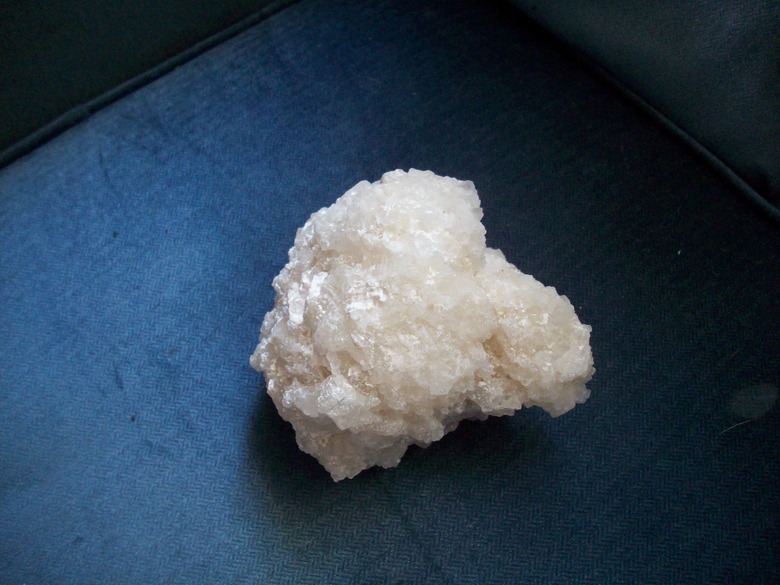How To Use Borax In Swimming Pools
For such a common — and cheap — household product, borax packs a punch when it comes to keeping swimming pool water clean and comfortable for swimmers. The boron it contains suppresses algae growth, and its chemical properties help to stabilize pH at a desirable level while allowing you to use less chlorine. Using it successfully to buffer pH and stabilize alkalinity requires some understanding of the chemistry, however.
Pool pH and Alkalinity
Maintaining the proper pH level of swimming pool water is crucial because, when pH is too high, the chlorine disinfectant in the water does not work effectively. When pH is too low, the water's acidity can cause eye and skin irritation and can damage pool equipment and the pool itself. In general, the ideal range for pool water pH is between 7.2 and 7.6.
The alkalinity of the water is important, because the presence of alkaline substances in the water acts as a buffer against changes in pH. When the total alkalinity of the water is in the ideal range, typically between 80 and 120 parts per million, pH is usually stable and relatively easy to maintain in its own recommended range.
Baking Soda and Soda Ash
Two chemicals often used to adjust pH and total alkalinity in swimming pools are sodium bicarbonate, which is baking soda, and sodium carbonate, commonly called soda ash. Adding baking soda to a pool will raise the pH, but it will also raise total alkalinity, so it's not a good solution when pH is too low but total alkalinity is not. Soda ash, if used correctly to raise pH, is less likely to raise total alkalinity, though it can still cause problems if overused.
Sodium Tetraborate
Yet another solution is sodium tetraborate, the chemical name for the household cleaning product commonly called borax. Borax acts as both as a pH buffer and pH increaser when added to pool water, but because it is not a carbonate compound, it doesn't increase the pool's total alkalinity the same way that baking soda and soda ash do. Borax can also help to keep water clear and inhibit the growth of algae by stabilizing pH in the proper range.
To act as a pH buffer, borates should be present in the pool's water at a concentration of between 30 and 50 ppm. Some borax products contain sodium tetraborate decahydrate, and others contain sodium tetraborate pentahydrate, which contains more boron per mass than sodium tetraborate decahydrate and works as a buffer when added to the pool in smaller amounts.
A disadvantage of borax is that its own pH level is very high, around 9.5, and when it's added to a pool in large amounts, it will significantly raise the water's pH. A solution is to also add muriatic acid or another pH-reducing product when adding borax, to bring the pool's pH back in line.
How to Use Borax
If you're trying to simply increase pH, you may be able to add borax alone. If you're aiming to increase the water's borate level to buffer the pH and the water's pH level is already correct, you may have to add both borax to increase the borate concentration and acid to bring pH back down.
The amount of borax you'll need to add will depend on your water's initial pH level, its total alkalinity, the size of the pool, the type of borax product you're using, and your target water chemistry goals. An online water-chemistry calculator will tell you how much borax to add and whether you need to add acid, depending on your goal and the specific conditions of your pool.
To use borax to raise pH, first use the calculator to determine how much of the product is needed to make the desired change. With the pool's pump and filter running, add the recommended amount of borax to the skimmer. Wait a day, and then retest pH. Add more borax if necessary to raise pH to the desired level. If the calculator tells you that you need to add both borax and acid, begin by adding half of the required amount of acid, and then add half of the recommended amount of borax. Brush the sides of the pool to help dissolve the borax into the water.
After the first application of borax is dissolved, add the rest of the acid, followed by the rest of the borax. Brush again, and then keep the pump running for 24 to 48 hours. After 48 hours, test the water's pH and add more acid if necessary to bring the pH down to the correct level.
